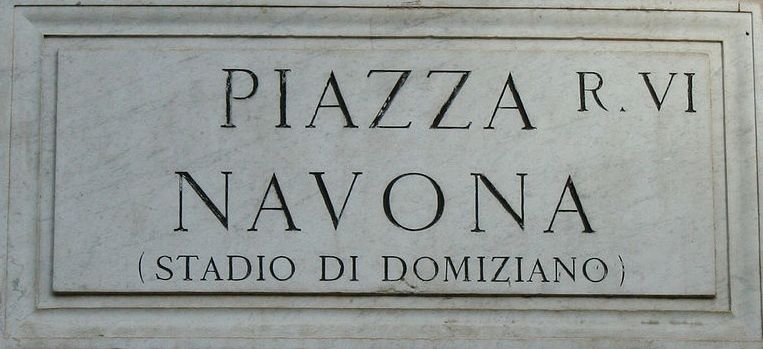 With it’s flamboyant fountains, vibrant cafe culture, colourful street performers and elaborate baroque palazzi, Piazza Navona is Rome’s most celebrated (and some say beautiful) city square…
With it’s flamboyant fountains, vibrant cafe culture, colourful street performers and elaborate baroque palazzi, Piazza Navona is Rome’s most celebrated (and some say beautiful) city square…
Built over the 1st century AD ruins of Stadio di Domiziano (a 33,000 seater athletic stadium), the Piazza was defined as a public space during the late 15th Century when it became home (for nearly 300 years) to Rome’s main food market before it was moved to Campo de’Fiori in 1869. Constructed in an elongated oval that emulated the grandstands that preceded it, The Piazza transformed into the dramatic spectacle of (predominately) baroque Roman architecture and sculpture that we see today during the reign of Pope Innocent X Pamphilj (1644-55).
Centred on the Fortana die Quattro Fiumi (Fountain of Four Rivers) by Italian Sculptor Gian Lorenzo Bernini (unveiled in 1651), the Piazza is dominated by the striking concave facade of Sant’Anese in Agone; commissioned by the pope in1652. The church is believed to have been founded on the site of the martyred Saint Agnes and contains a number of large scale sculptures. The Piazza is mirrored at either end by two other fountains; Fontana del Nettuno at the northern end and Fontana del Moro to the south. Both fountains were created by Giacomo della Porta and pre-date Bernini’s creation (1574 and 1575 respectively) however were added to during this period.
The largest building on the Piazza is the 17th century Palazzo Pamphilj which was built for Olimpia Maidalchini; the widowed (and somewhat unpopular) sister-in-law of Pope Innocent X who became his advisor and alleged mistress. Since the 1920’s the Palazzo has housed the Brazilian Embassy and has been Brazilian property since 1964.
Although no longer the seat of the city’s power, the piazza is still one of the main focal points of the city. Today it is a lively and atmospheric quarter that although buzzes with street artists, musicians and entertainers creating amusement and merriment for the large number of tourists, is still a popular spot with locals; lined with cafes and restaurants it is a hive of activity from early morning until late into the evening.
Such a fantastic place packed full of people, Piazza Navona makes for an ideal spot for us to do some plein-air painting and is in fact the very first location we use on the program!